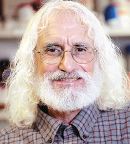Cancer immunotherapy is about to get much more complicated. Just as oncologists are becoming familiar with checkpoint inhibitors and their growing indications, they will eventually be challenged with using them in novel combinations and in new tumor types. This will be the fruit that comes from understanding how and why immunotherapy often fails and engineering drugs that overcome these obstacles.

Historically, the three pillars of cancer therapy have been surgery, radiation, and chemotherapy. Immunotherapy is now the fourth pillar, and it represents a revolution in how cancer is being treated.— Philip D. Greenberg, MD
Tweet this quote
Scientists at the 2nd International Cancer Immunotherapy Conference in New York described the future directions in cancer immunotherapy at a press conference.1 The panel was moderated by Philip D. Greenberg, MD, Head of the Program in Immunology at the Fred Hutchinson Cancer Research Center, Seattle, and cofounder of Juno Therapeutics.
The conference was jointly sponsored by the Cancer Research Institute (CRI), the Association for Cancer Immunotherapy (CIMT), the European Academy of Tumor Immunology (EATI), and the American Association for Cancer Research (AACR).
‘Translating Science Into Survival’
“Historically, the three pillars of cancer therapy have been surgery, radiation, and chemotherapy. Immunotherapy is now the fourth pillar, and it represents a revolution in how cancer is being treated,” Dr. Greenberg said at the briefing.
The conference theme was “Translating Science Into Survival.” Elizabeth Jaffee, MD, Deputy Director of the Sidney Kimmel Comprehensive Cancer Center at Johns Hopkins University, Baltimore, commented that the theme “represents an important point—that patients receiving immunotherapy are not only living years longer, but with good quality of life.”

Patients receiving immunotherapy are not only living years longer, but with good quality of life.— Elizabeth Jaffee, MD
Tweet this quote
Dr. Greenberg remarked upon the work involved to get to this place. “For those of us working in this field for decades, our successes have not happened over night. We spent many years figuring out how to make something work in the clinic, and this can be a long slog.” Once a drug is used in the clinic, its true efficacy becomes clearer and the challenges more obvious, he said, “but this comes at a time when technology makes it easier to probe in great depth about why things do and don’t work.”
The panel represented more than 1,400 scientists who convened to share cutting-edge research in all major facets of cancer immunology and immunotherapy. This includes areas now familiar to clinicians—checkpoint blockade, T-cell therapies, adoptive T-cell therapies, oncolytic viruses—and much more from the translational field, including the tumor microenvironment, immune surveillance, adaptive immunity, immune regulation of T-cell responsiveness, genomic methods for identifying tumor antigens, personalized vaccination, the microbiome, new checkpoints, and the like.
Obstacles Being Addressed

Jill O’Donnell-Tormey, PhD
Jill O’Donnell-Tormey, PhD, who is Chief Executive Officer and Director of Scientific Affairs at CRI, noted that the current state of immune oncology represents “the tip of the iceberg” and said the field is moving in a direction in which “biology and science” will drive breakthroughs that will cure more patients. The field is at a point right now where scientsts can “ask questions we could not even ask before,” she commented.
The challenge, added Dr. Greenberg, is to understand the limitations of current immunotherapy strategies and how to overcome them. “There is absolutely no question that what works in immunotherapy today will work better next year, and we will impact on a larger fraction of patients,” he said. “The science is there to make things better.”
“Our current immunotherapy drugs have hit the low-hanging fruit,” Dr. Jaffee commented. They work well in about 20% of patients and only in certain tumor types. The challenge is to decipher why some tumors do not respond and to convert them to cancers that do. “That’s the theme of this meeting,” she said.
Scientists have determined how to engage the T cell in killing cancer, disabling the immune system’s “brakes” when necessary through checkpoint blockade. The push now is to build upon this knowledge by identifying more tumor checkpoints and more tumor signals and finding drugs that target them. Patients who do not respond to initial immunotherapy may have additional checkpoints beyond programmed cell death protein 1 (PD-1) that are suppressing the T cell, and they will need to be inhibited.
“There are probably 10 to 20 additional checkpoints that we are hearing about at this meeting,” Dr. Jaffee told the media. “We may need to target 10 tumor signals or more in an individual patient. We will need to use combinations to get at these cancers that currently are not responding to immunotherapy.”
Four Recurring Themes
Research in four key areas cited by the panelists is aimed at elucidating mechanisms of resistance to immunotherapy that keep current approaches from working in only a subset of patients. Relapses occur despite the fact that T cells robustly attack malignant cells. T cells also become “exhausted,” and they, themselves, can be destroyed in the fight against the tumor.
The Next Wave of Immunotherapy
- The 2nd International Cancer Immunotherapy Conference brought together 1,400 scientists in the field of immunology and immunotherapy.
- Research efforts currently focus on determining why immunotherapy fails in some patients and how to overcome this.
- Four key research themes are the microenvironment, tumor metabolism, the microbiota, and neoantigens.
- Many more checkpoints (beyond PD-1) will be discovered, and drugs that block them will be developed as well.
Dr. O’Donnell-Tormey identified the four recurring themes being explored in the field: the tumor microenvironment, cancer metabolism, the microbiota, and neoantigens.
Tumors grow within a complex microenvironment composed of immune cells, fibroblasts (and other components of the stroma, a physical barrier around the tumor), endothelial cells, and other nonmalignant cells. These factors in the microenvironment can act in ways that suppress the effects of immunotherapies. The tumor microenvironment can also possess an altered metabolic profile—for example, marked by mitochondrial insufficiency and loss of oxidative function—that may not keep pace with the demands of T-cell activation and effector function. Researchers at the meeting described work that suggests not only that the metabolic nature of the microenvironment may predict a patient’s response to immunotherapy, but that metabolic reprogramming of T cells or the microenvironment
itself may enhance treatment.
Evidence is also mounting that the microbiome impacts natural cancer immune surveillance as well as treatment-induced responses. Researchers are studying how commensal bacteria may shape the T-cell repertoire and how microbe-specific T-cell responses might be therapeutically harnessed. “There’s probably going to be a role down the line for microbiota-based therapies in cancer,” Dr. O’Donnell-Tormey said.
The foundation for most immunotherapies is the array of specific interactions between T cells and antigens presented by the tumor. This involves neoantigens, which are small fragments of mutated proteins from the tumor that contain the mutation; they are expected to be key players in “personalized” cancer vaccines. By themselves, cancer vaccines proved fairly ineffective and therefore fell out of favor; however, with newer technologies and with checkpoint inhibitors available for combination therapy, they show promise.
Vaccines appear to be one means of activating indolent T cells so that they move toward, recognize, and attack the target, Dr. Jaffee added. “We will probably need to combine them with one or more checkpoint inhibitors that take the brakes off so that they can act to their full potential.”
Other Avenues of Research
The panelists touched upon a few other new areas of research. Dr. Greenberg described how oncolytic viruses hold great potential for initiating immune responses in “cold tumors.” Oncolytic virus therapy holds “enormous promise” and will be most useful in combination with other approaches, he predicted.
Chimeric antigen receptor (CAR) T-cell therapy is now being refined and expanded beyond the use of CD19 and CD30 as targets and beyond late-stage disease. “The idea of using synthetic biology to change how T cells work is going to be a very important part of the immunotherapy armamentarium moving forward. The challenge is to find good, safe targets and go after them. This is where the crux of the work is now,” he said.
Dr. Greenberg commented that CAR T-cell therapy has been “incredible” in treating acute lymphoblastic leukemia and B-cell lymphomas, but this is just the beginning. “CD19 was a very lucky place to start, but there are trials in whole sets of new antigens right now,” he noted. While these new avenues will require “a lot of innovative synthetic biology” to yield success in the clinic, he added, “there’s enormous potential, and no question this will advance quickly.” ■
Disclosure: Drs. Jaffee and O’Donnell-Tormey reported no potential conflicts of interest.
Reference

